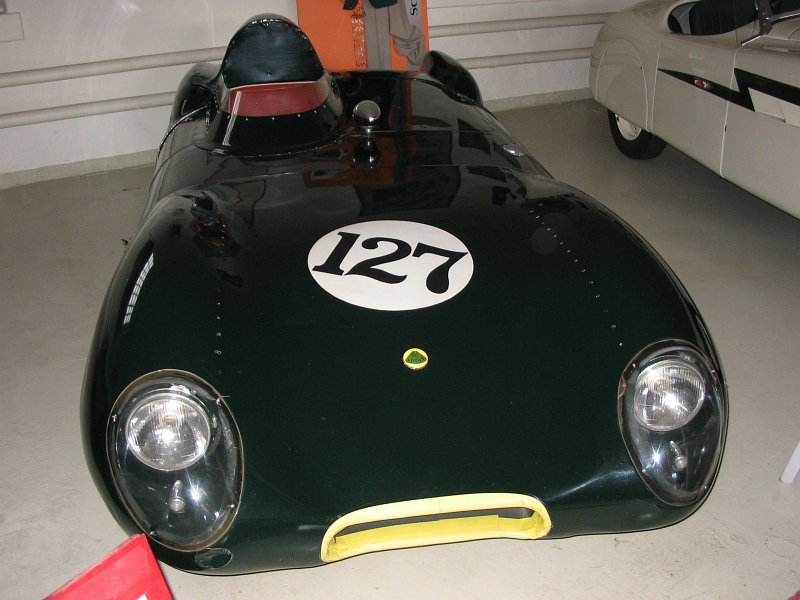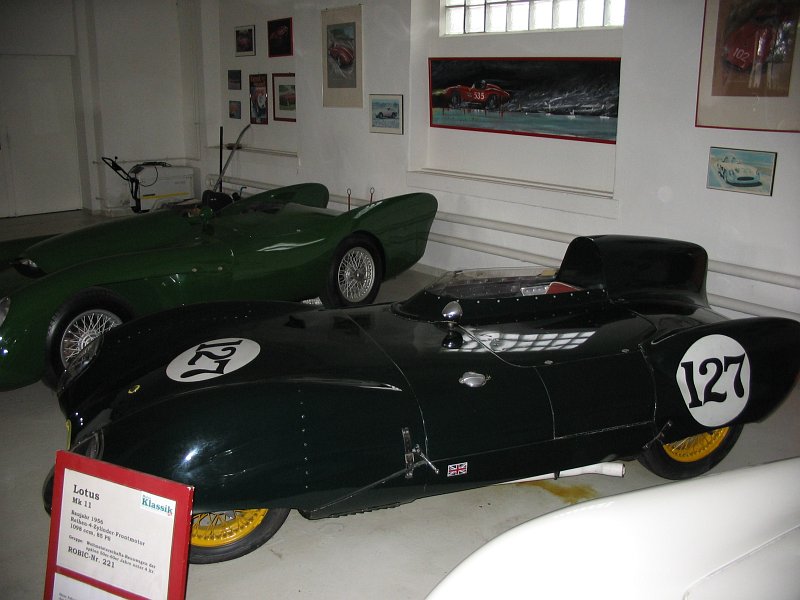Description
The Lotus Mark 11, introduced in 1956, was one of the most successful and significant sports-racing cars of the 1950s and the model that firmly established Lotus as a world-class constructor. It refined the design principles of the earlier Mark 8, 9, and 10, combining aerodynamic efficiency, lightness, and mechanical simplicity into a car that could outperform much larger and more powerful rivals. The Mk 11 was the first Lotus to achieve genuine international recognition through its success at Le Mans and other major endurance races, marking the beginning of the company’s rise to prominence in global motorsport.
The Mark 11’s development represented the close collaboration between Colin Chapman and aerodynamicist Frank Costin, who applied his experience in aircraft design to create a body that was as sleek as it was effective. The car featured a tubular steel spaceframe chassis — an evolution of the layout used on the Mk 9 — that was both incredibly light and rigid. Every element of the structure was optimised to provide maximum strength for minimum mass, in keeping with Chapman’s philosophy that lightness was the key to speed and efficiency. The result was a chassis weighing little more than 25 kilograms and a total car weight of around 450 kilograms, depending on specification.
The Mk 11’s bodywork was a masterpiece of aerodynamic design. Costin’s wind-cheating shape featured a long, low nose, smooth wheel fairings, and a gently tapering tail that minimised drag while maintaining stability at high speeds. The car’s frontal area was exceptionally small, allowing even modest engines to achieve remarkable performance. Its smooth, uninterrupted surfaces made it one of the most visually striking racing cars of the period — functional, purposeful, and elegant.
Power came from a variety of small-displacement engines, depending on class and customer requirements. The most famous and successful versions were fitted with the Coventry Climax FWA 1.1-litre all-aluminium four-cylinder engine, producing around 75 to 85 horsepower. Other variants used Ford or MG units ranging from 1.0 to 1.5 litres. The engine was mounted well back in the chassis for ideal weight distribution and paired with a four-speed manual gearbox, typically sourced from MG or BMC. With its light weight and advanced aerodynamics, the Climax-powered Mk 11 could reach top speeds of up to 130 mph — astonishing for its engine capacity — and was capable of outpacing much larger cars on fast circuits such as Le Mans and Monza.
The suspension was typically Lotus in conception: independent double wishbones at the front and a live rear axle located by trailing arms and a Panhard rod. This setup provided a fine balance of agility, predictability, and comfort over long distances. Drum brakes were fitted all round, though some later competition cars were upgraded with front discs. The steering was light and incredibly responsive, giving the Mk 11 the kind of delicacy and precision that would become a Lotus hallmark.
The Lotus Mk 11 made its debut at the 1956 24 Hours of Le Mans, where it achieved immediate success. The car driven by Reg Bicknell and Peter Jopp, powered by a 1.1-litre Coventry Climax engine, finished seventh overall and first in its class — an extraordinary achievement for such a small and underpowered machine. The result brought international acclaim to Lotus and validated Chapman’s design philosophy on the world stage. The Mk 11 went on to achieve numerous victories and podium finishes in both British and European sports-car racing, dominating the 1.1-litre class and becoming a favourite among privateer racers.
Beyond its competition success, the Mk 11 was also offered as a customer car, available either fully assembled or in component form for private builders. Around 270 examples were produced between 1956 and 1958, making it one of the first Lotus models to be built in significant numbers. The car’s performance, reliability, and affordability made it a popular choice in club and international racing alike, and it became a key export success for Lotus in markets such as the United States.
Aesthetically, the Mark 11 is widely regarded as one of the most beautiful cars Lotus ever built. Its proportions were dictated entirely by aerodynamic necessity, yet the resulting form possessed a natural grace and purity that perfectly expressed the brand’s engineering-led approach. The low, rounded nose, minimal cockpit, and sweeping tail combined function and form in perfect harmony.
Today, the Lotus Mark 11 is considered one of the most important sports-racing cars of the 1950s and a cornerstone of Lotus history. It established the company’s reputation for building lightweight, technically advanced cars that could outperform far more powerful rivals. It also laid the groundwork for the next generation of Lotus competition cars, including the Eleven Le Mans Series 2 and the later Type 15 and 17 models.
The Mk 11 remains a symbol of Colin Chapman’s genius — a car that embodied his belief that “the most elegant design is the simplest one that works.” Its blend of engineering ingenuity, aerodynamic sophistication, and racing success marked the moment when Lotus transitioned from a small British workshop into an internationally respected racing manufacturer. In every sense, the Mark 11 was the car that made Lotus.


